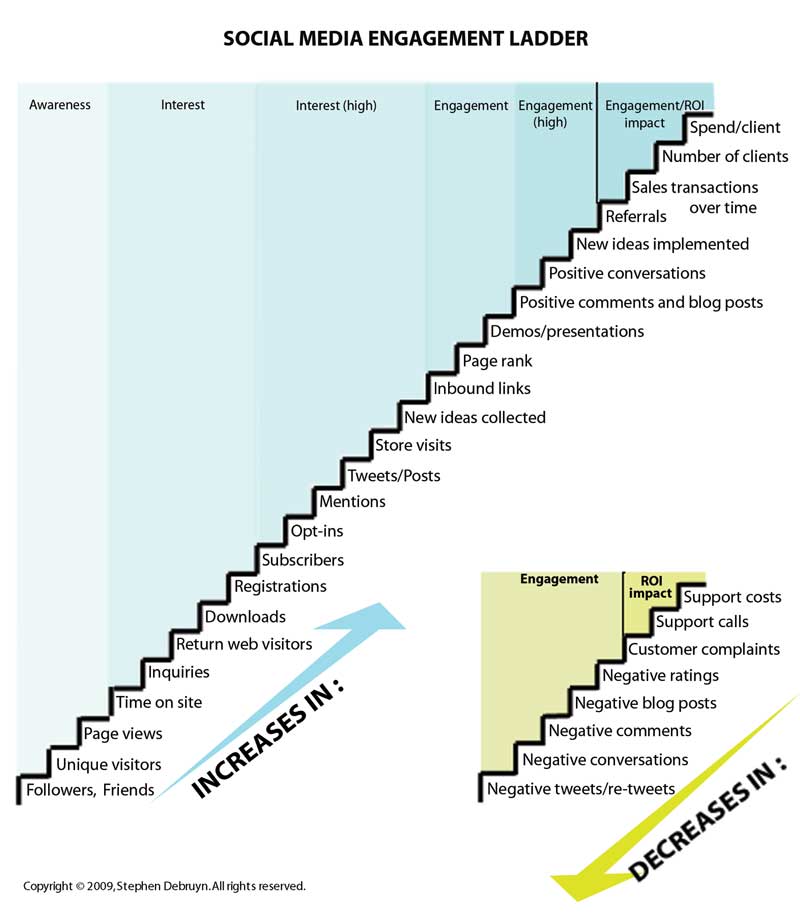Digital communications’ impact on meeting business objectives is more indisputable than ever, but that doesn’t mean executives have abandoned traditional media measures—quite the opposite. In fact, according to a survey of more than 400 communications professionals conducted by PR News and BurrellesLuce, the two most important media categories that help execs attain their goals are print and broadcast (38% and 24%, respectively), with social media coming in fourth at 15% (see complete survey results).
“Initially, I was surprised by the ranking of media categories—not that print and broadcast were first and second, but that social media was third, considering that so few respondents said that PR’s role ‘as viewed by top management’ was to build community and manage crisis communications,” says Johna Burke, VP at BurrellesLuce. “But then I realized it reflects the fact that social media is now being used increasingly to advance two other key functions identified in the survey: conveying the organization’s essential story, and helping to generate sales.”
Those two functions cited by Burke speak to a central theme in communications, traditional, digital or otherwise: measurement. However, in the past, PR and marketing execs pursued measurement separately, as each has their own KPIs and metrics. Today, though, this separation doesn’t hold water; on the contrary, it actually works to the overall organization’s detriment. The new measurement mandate: an integrated approach, both in terms of digital and traditional media, and marketing and PR metrics/KPIs.
“A multi-channel, holistic approach is imperative for the success of a communications program,” Burke says. So, with that as a backdrop, communications executives should consider the following best practices for moving their measurement efforts from siloed to integrated.

â–¶ Conduct an executive audit. Prior to the execution of any campaign, communicators must solidify their understanding of management’s expectations and definitions of success. For example, in the PR News /BurrellesLuce survey results, respondents identified the following as management’s view of the purposes served by PR:
• Getting the organization’s name in the media (traditional, social or both): 23%
• Maintaining or rebuilding the organization’s reputation: 22%
• Conveying the organization’s essential story to the media: 21%
• Generating sales leads, donations, etc.: 16%
Then, when asked how they would like management to view PR’s contributions, respondents cited:
• Maintaining or rebuilding the organization’s reputation: 22%
• Conveying the organization’s essential story to the media: 20%
• Offering strategic advice to senior leadership: 20%
• Getting the organization’s name in the media (traditional, social or both): 19%
Clearly, the top priorities are similar, but the orders differ slightly. Therefore, it is critical to go into a communications program with a crystal-clear understanding of management’s perception of success relative to your own.
â–¶ Establish a baseline by setting measurable objectives. “Which metrics to select for a specific social media campaign depends entirely on the goals and objectives of the campaign,” says Stephen Debruyn, a marketing and communications consultant. “It is imperative to define them early in the campaign development process.”
To be sure marketing and PR objectives are aligned to work in tandem with one another, executives from both departments must collaborate during this phase.
“Focus on the business of your organization,” Burke says. “Make sure that your communications goals are explicitly aligned with the objectives of strengthening your organization’s position and influence.”
â–¶ Develop your strategy in accordance with established objectives. In the modern communications era, KPIs often include, awareness, consideration, action, loyalty and engagement, each of which has any number of metrics that help to quantify changes. Alissa Blate, EVP and global practice leader of MWW Group’s Consumer Lifestyle Marketing division, identifies the following as examples:
• Awareness: Share of voice for competitors and products; search visibility; monthly traffic, page views and trends, search referrals.
• Consideration/Engagement: Conversation topics and trends, tonality breakdown; time spent on site; comments, ratings, forwards; inbound links.
• Action: Sign-ups, contest entries; content submitted; downloads; purchases, sell-throughs.
• Loyalty: Followers, fans, RSS subscribers, e-mail subscribers; returning visitors, bookmarks, favorites; recommendations.
“KPIs can be quantitative (Web visitors, tweets, impressions, etc.) or more qualitative (tone of comments, recommendations, etc.) in nature, with the last category more indicative of intent,” Debruyn says, pointing to the engagement ladder (see image), which helps define the degree of stakeholders’ engagement in a given communications initiative. “As one climbs this ladder, the engagement level increases; therefore, the KPIs at the upper end of the ladder are more valuable from an ROI perspective, even though they do not directly show ROI.”
â–¶ Analyze performance data holistically and over time, taking traditional and digital—and tangible and intangible—indicators into consideration.
“A company’s revenue stream most often cannot be correlated directly with specific marketing/communications initiatives, and that includes social media,” Debruyn says. “What can be attempted is to measure the impact that these initiatives have in the aggregate and over time on revenue and revenue parameters, such as the number of customers, sales transactions per month, up-sells and cross-sells, etc. With a revenue baseline established, a range of marketing activities unfolding over time can be compared against fluctuations in these revenue parameters for a specific time period after the marketing programs have been executed.”
CONTACTS:
Johna Burke, [email protected]; Stephen Debruyn, [email protected]; Alissa Blate, [email protected]
